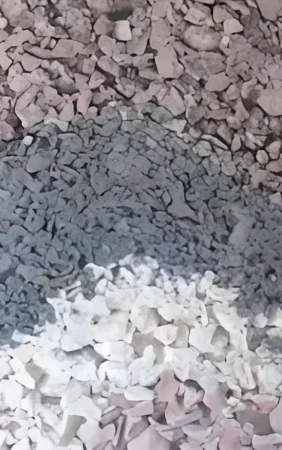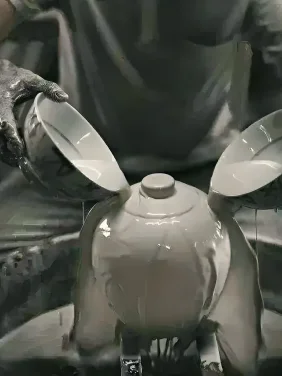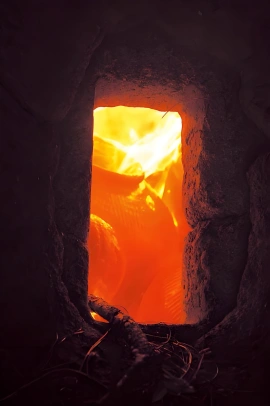Crafted by Time, Perfected by Nature
Discover the ancient art of Jun porcelain from Shenhou, China—a legacy of over 1,000 years.
The Story of Jun Porcelain
Born in the kilns of Shenhou Town, Henan, Jun porcelain is a living piece of China’s cultural heritage. In 2008, its firing techniques were officially recognized as a National Intangible Cultural Heritage by China’s State Council, honoring a craft that has captivated the world for over a millennium. Its mesmerizing glaze variations shine in collections like The British Museum、The Metropolitan Museum of Art, where Song Dynasty pieces stand as timeless treasures.
Known as ‘Jun ware’ in historical records, Jun Porcelain is a masterpiece of Chinese heritage.

The Craftsmanship Process
Jun porcelain isn’t just pottery—it’s a dance between fire and earth. For over a millennium, artisans in Shenhou Town have honed this craft, turning raw clay into treasures that blend utility with breathtaking beauty. The secret lies in the kiln: at 1300°C, natural glazes transform unpredictably, creating patterns that echo the sky, sea, and mountains. This is art you can touch, use, and pass down through generations.

Clay Selection
Sourced from the mineral-rich lands of Henan, the clay is the foundation of Jun porcelain’s durability and beauty.

Hand-Shaping
Master artisans shape each piece by hand, preserving techniques passed down through generations.

Natural Glazing
Using mineral-based glazes, the unpredictable hues—blues, purples, reds—are born in the kiln, a gift of nature.

Kiln Firing
Fired at 1300°C for day, the transformation in the kiln creates the signature ‘kiln-transmutation’ effect.
Sustainability & Legacy
Jun porcelain is crafted using clay and natural mineral-based glazes sourced from the earth around Shenhou Town. Every piece you own carries a story—of Shenhou’s artisans, of nature’s magic, and of a craft that endures.
Jun Porcelain FAQs
What makes Jun porcelain different from other ceramics?
Jun porcelain is renowned for its ‘kiln-transmutation’—a natural process where glazes create unique, unrepeatable patterns during firing. Recognized as a Chinese cultural heritage, it blends ancient craftsmanship with stunning aesthetics.
Why does the color and pattern vary between pieces?
That’s the magic of Jun porcelain! The kiln’s heat and natural glazes create one-of-a-kind designs—no two pieces are identical, making yours truly unique.
Are the materials and colors in Jun porcelain really natural?
Yes, absolutely! Jun porcelain is crafted using clay and natural mineral-based glazes sourced from the earth around Shenhou Town. The stunning colors—like deep blues, fiery reds, and subtle purples—emerge organically during the kiln firing, free from synthetic chemicals, showcasing nature’s artistry in every piece.
Is Kilnphx sustainable?
Absolutely. We use eco-friendly, mineral-based glazes and partner with Shenhou workshops to minimize our carbon footprint while supporting local artisans.
What are the cracks on my Jun porcelain piece, and are they normal?
Those delicate lines are called ‘opening cracks’ or ‘ice-crackle patterns,’ a natural and cherished feature of Jun porcelain. They form during the cooling process after firing and are a sign of authenticity, not damage. Each pattern is unique, adding to the piece’s charm and value.
Will the cracks on my Jun porcelain affect its durability or use?
Not at all! The opening cracks are purely aesthetic and don’t compromise the piece’s strength. For daily-use items like cups or bowls, they’re crafted to remain sturdy and functional. For decorative pieces, they enhance the artistry without affecting longevity.
Can I request a custom Jun porcelain piece?
Currently, we offer a curated collection to ensure quality and authenticity. However, for special requests or limited-edition pieces, reach out to us at [[email protected]]—we’d love to explore possibilities with you!